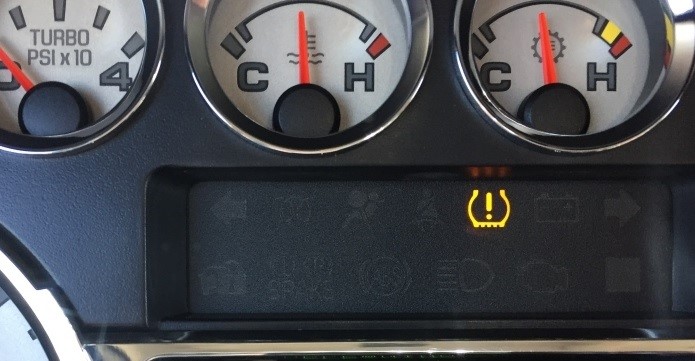The TREAD Act mandated that passenger cars and light trucks have an alert system for low tire pressure by model year 2008.
Since the average vehicle age in the U.S. is now around 12 years, that means that almost every car/truck that comes into shops for new wheels/tires or for tire repair will have some kind of TPMS system.
Direct systems have a sensor mounted inside the wheel, either attached to the bottom of the tire valve or banded to the rim’s drop-center. But indirect systems don’t have sensors inside the rims – the tire pressure is measured indirectly using the ABS system.
Even though some vehicle manufacturers mainly use indirect systems (Volkswagen & Honda), direct TPMS is still more common as a whole.
Therefore, having supplies on-hand for servicing TPMS sensors is a must for the modern tire shop. Locations that don’t will have to turn business away, losing out on a source of revenue.
Whenever new tires are installed, the Rubber Manufacturers Association recommends that the valve components are replaced also. For clamp-in sensors, it’s a simple matter of replacing the grommet, nut, core and cap; for snap-ins, the entire rubber valve needs to be changed.
The replacement ratio for service-kits is several times that of sensors. Even though new sensors are required less often than service kits, it’s still a good idea to have some parts in-stock. In colder regions of the country, vehicle owners will purchase a second set of wheels that can be installed for the cold months (winter tires). And eventually the battery in the sensors will get exhausted, which will make it necessary to replace the part.
There’s three types of after-market sensors: direct-fit, configurable & universal. Direct-fits are a one-to-one replacement to the OE – sensor programming isn’t required but a relearn is still necessary, to register the new IDs to the vehicle’s module. Since there’s now many different variations of sensor behavior (RF frame format, modulation type, etc), many direct-fit parts are needed in order to service all the different vehicles in operation. Configurable sensors “wake up” in the correct mode when tested or activated with a TPMS tool; a separate programming step isn’t required and less SKUs are needed, compared to direct-fit units. But new configurable SKUs are needed whenever vehicle manufacturers release new sensor protocols. Universal sensors cover more models than direct-fits and configurable parts but they need to be programmed before installation.
Shops that keep a line of service kits for OEM sensors, some after-market sensors for replacing the OE units, TPMS tools for sensor testing and maintain up-to-date training for their tire techs will be well-prepared for the reality of the modern tire dealership.
